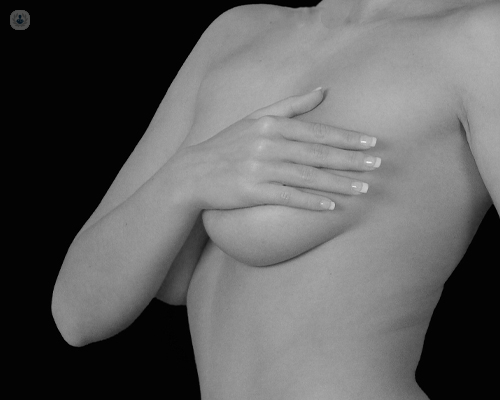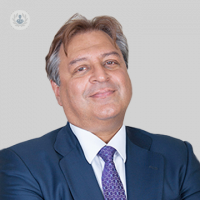Postoperative care following aesthetic breast surgery: how can complications be prevented?
Written in association with:One of the main priorities of postoperative care is to pre-empt any potential complications and reduce the risk of them occurring. Two of the main concerns are often bleeding and infection. Mr Tariq Ahmad, an award-winning plastic and cosmetic surgeon based in Cambridge, explains how he prevents any complications forming both during and after surgery and the steps that you should take post-breast surgery for a smooth and speedy recovery.

Which steps do you take to prevent complications forming?
At the end of every procedure, I always carry out an antiseptic or saline washout before closing the incisions and check the blood pressure to examine the level of bleeding. Generally speaking, a little oozing is safe just as long as the pressure is high, but not so if the pressure is low.
Surgical drains have been used in operations for many years. They intend to stop bleeding, however, it is often open to question whether they actually work well. I decided not to use drains in breast surgery over 15 years ago and I have never regretted that decision. In my experience, they do not stop bleeding, or haematoma, and can be painful for the patient. They can also act as a portal for infection to get into the wound, so I avoid them.
I believe the most effective way to prevent bleeding postoperatively is to stop it preoperatively. The three words I say to myself at the end of every procedure are: 'haemostasis, antisepsis and analgesia.'
When performing a breast augmentation, I apply an antibiotic into the wound as well as local anaesthesia which greatly relieves the patient of pain, especially if the implant is placed under the muscle.
Will I be given any medication to prevent infections?
For all breast procedures, a comfortable patient postoperatively is a one that is haemodynamically stable and therefore, unlikely to bleed excessively. I normally give an early intraoperative dose of antibiotics with dexamethasone plus tranexamic acid and then give two more doses of antibiotics after the operation. Tranexamic acid is a medicine that helps your blood clot and consequently reduces blood loss both during and after the operation. It can also aid in preventing oedema and excessive bruising, particularly if the patient underwent additional liposuction during breast reduction surgery.
Will I have a dressing on my breasts?
I often find less is more and over the years, I have realised that applying a dressing gives me a false sense of security. Following breast surgery, the breasts need some type of support but this depends on the patient’s age, the tissues, and dissection. For breast reduction, I have moved to adhesive paper strips for accurate final epithelial coaptation. This is then supported with tape such as Micropore with a couple of layers over the wound. I may apply something to bridge to a support bra, even if it’s only used for the first 24 hours, which is usually something absorbent such as a moisture gradient in case there is oozing. This consists of one layer of damp gauze that is ideally aqueous antiseptic, followed by a dry gauze which can absorb any blood away from the wound.
After 24 to 48 hours, the tape is all that is needed under the bra and by then it should be adherent enough for you to shower. If all goes well, the tape can be peeled away three weeks later after the wound has closed nicely. Only the support bra is then required for around six weeks.
Should I exercise during recovery?
I used to advise my patients not to move their arms much but it is becoming clearer that recovery is better and faster if you perform regular, gentle movements. This can involve slow arm raises from the side up towards your head to stop them stiffening up. I would suggest doing this once or twice an hour, but to stop if you feel any tightness or pain. Light exercise can usually be restarted after six weeks, increasing the intensity gradually over 12 weeks.
Postoperatively, your-day to-day activity should be limited and you should definitely avoid any heavy lifting and excessive pectoral muscle use. Often though, we use our pectoral muscles inadvertently, for example when sitting up using your hands to support and push your body up. Therefore, you will need to be taught before going home how to get out of bed without using your chest muscles and instead by swinging the legs over the edge of the bed. Ideally, you should have some help from a family member or friend.
To book an appointment with Mr Tariq Ahmad, visit his Top Doctors profile and check his availability.



